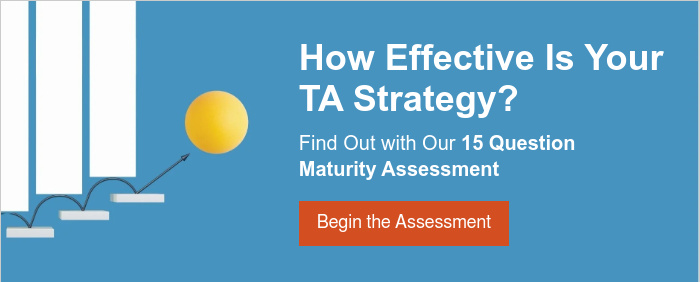Most established TA teams have solved the basic issues: slow approvals, unclear job descriptions, poor communication. But the bottlenecks that separate good teams from exceptional ones are more subtle. They hide within processes that seem to work fine on the surface. Great TA teams think differently. Instead of just fixing problems as they arise, they build systems that prevent bottlenecks from happening in the first place.
What High-Performing TA Teams Do Differently
They Use Friction Mapping to Identify High-Cost Delays
Elite TA teams don’t assume bottlenecks will show up in obvious places. Instead, they dissect the hiring journey stage by stage, tracking time-in-stage, candidate drop-off points, and feedback cycles by business unit, location, and role type. They're not looking for what's broken—they’re looking for what could be better. They treat data not just as a performance mirror, but as a map to opportunity.
What you can do: Use friction mapping to overlay hiring velocity against business impact. Where are you slowest to hire for high-value roles? Where is time-to-decision longest despite high candidate interest? These are the points where improving your process design will make the biggest difference.
They Design for Predictive Agility, Not Just Structure
Process consistency is no longer enough. Leading teams are building hiring models that flex with the business, not just respond to it. That means embedding TA into workforce planning, scenario modeling, and even product launches. They use historical data, real-time demand signals, and AI-driven tools to get ahead of future talent needs before they bottleneck growth.
What you can do:
Partner with key stakeholders to anticipate talent needs at least 1–2 quarters ahead. Use your ATS data to forecast future demand for niche roles, and build proactive sourcing strategies based on these patterns and not just headcount plans.
They Use Market Intelligence to Influence the Process
Labor market data is not just useful for sourcing, it informs the whole hiring approach. High-performing TA teams use competitive insights to shape hiring timelines, influence budget discussions, and manage stakeholder expectations. For example, if time-to-hire for AI engineers is 40% longer than average, they adjust capacity planning accordingly or bring in contract support sooner. The result: fewer stalls, faster pivots.
What you can do: Integrate market intelligence into every intake and pipeline planning conversation. Use external benchmarks to validate hiring timelines and offer competitiveness. Make this data visible to business leaders to build credibility and accelerate decisions.
They Eliminate Decision Paralysis with Distributed Ownership
In high-maturity orgs, process slowdowns often stem from one thing: decision friction. Whether it's unclear ownership, inconsistent evaluation criteria, or leadership hesitation, indecision can stretch timelines more than sourcing ever will. Elite TA teams remove this by building clear ownership maps, assigning weighted decision-makers, and using structured scorecards tied to job requirements—not just “gut feel.”
What you can do: Audit your last 10 slowest hires. Where did the decision stall? What would have helped? Then redesign your decision framework with pre-set tie-breaker rules, delegated authority for key roles, and required next-step SLAs after each interview round.
They Reposition Recruiters as Strategic Advisors
High-impact teams equip recruiters to act as consultants, not just coordinators. They coach them to educate hiring managers on labor market dynamics, challenge unrealistic expectations, and co-create hiring plans that align with workforce forecasts.
What you can do: Invest in recruiter enablement programs that include business acumen, market insights, and stakeholder management. Reframe performance metrics to reward process improvement and strategic impact, not just req closure.
Closing the Gap Between Good and Great TA
Reaching the next level of TA performance takes more than process tweaks. It requires strong data, executive backing, and a shift in mindset. Elite teams treat TA as a strategic function, not just a support service. You don’t need a full overhaul to start. Focus on one area where you’re losing time or top candidates, then track and improve it. The gap between good and great isn’t huge, but it takes deliberate effort to close.
Not Sure Where to Begin?
Our Talent Acquisition Maturity Assessment helps you pinpoint hidden inefficiencies and identify the high-impact upgrades that will move your team from good to exceptional.






